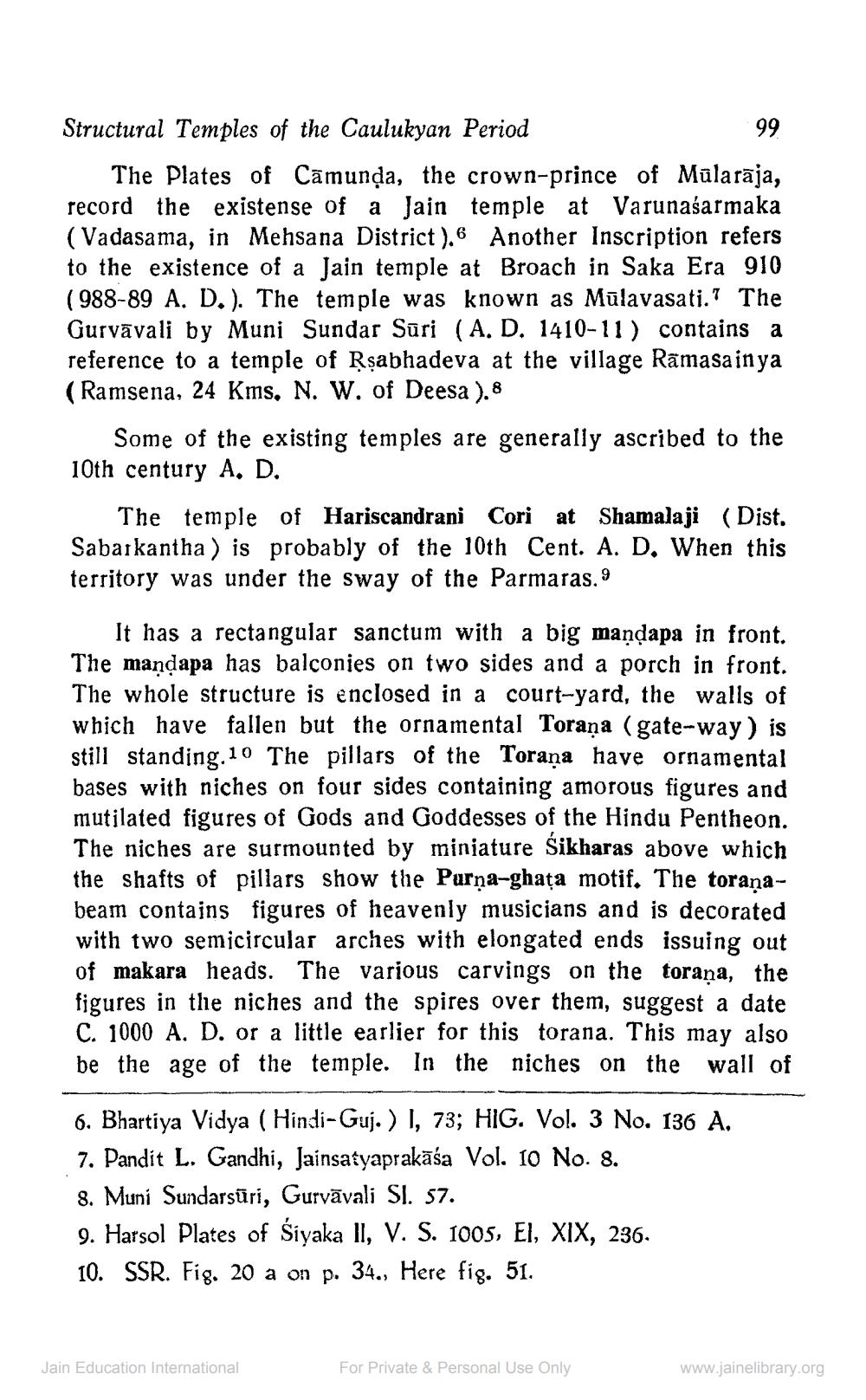________________
Structural Temples of the Caulukyan Period
The Plates of Cāmunda, the crown-prince of Mūlarāja, record the existense of a Jain temple at Varunaśarmaka (Vadasama, in Mehsana District ).6 Another Inscription refers to the existence of a Jain temple at Broach in Saka Era 910 (988-89 A. D.). The temple was known as Mūlavasati.? The Gurvāvali by Muni Sundar Sūri (A. D. 1410-11) contains a reference to a temple of Rşabhadeva at the village Rāmasainya (Ramsena, 24 Kms. N. W. of Deesa ).8
Some of the existing temples are generally ascribed to the 10th century A. D.
The temple of Hariscandrani Cori at Shamalaji (Dist. Sabarkantha) is probably of the 10th Cent. A. D. When this territory was under the sway of the Parmaras.9
It has a rectangular sanctum with a big mandapa in front. The maņdapa has balconies on two sides and a porch in front. The whole structure is enclosed in a court-yard, the walls of which have fallen but the ornamental Toraņa (gate-way) is still standing.10 The pillars of the Torana have ornamental bases with niches on four sides containing amorous figures and mutilated figures of Gods and Goddesses of the Hindu Pentheon. The niches are surmounted by miniature Sikharas above which the shafts of pillars show the Purna-ghata motif. The toranabeam contains figures of heavenly musicians and is decorated with two semicircular arches with elongated ends issuing out of makara heads. The various carvings on the toraņa, the figures in the niches and the spires over them, suggest a date C. 1000 A. D. or a little earlier for this torana. This may also be the age of the temple. In the niches on the wall of
6. Bhartiya Vidya ( Hindi-Guj. ) I, 73; HIG. Vol. 3 No. 136 A. 7. Pandit L. Gandhi, Jainsatyaprakāśa Vol. 10 No. 8. 8. Muni Sundarsūri, Gurvāvali Sl. 57. 9. Harsol Plates of Siyaka II, V. S. 1005, El, XIX, 236. 10. SSR. Fig. 20 a on p. 34., Here fig. 51.
Jain Education International
For Private & Personal Use Only
www.jainelibrary.org




